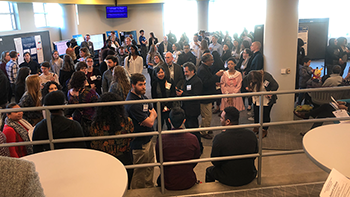Radio Frequency Signal Classification for Drone Detection
Description/Abstract/Artist Statement
There is a need to enhance a current Radio Frequency Signal Classification (RF-Class) toolbox that can detect, monitor, and classify wireless signals. This toolbox’s ability to accurately classify over-the-air radio signals will provide insights into spectrum utilization, device fingerprinting and protocol identification. The classification of RF signals is currently done using the modulation scheme, exploitation the cyclostationary features, and leveraging RF band allocation information. Once the modulation scheme is recognized, the scheme is demodulated, decoded, and the packets are extracted. Along with defense, this recognition also has the capability to be used for cyber offensive strategies. This current toolbox has been tested in a high signal-to-noise (SNR) environment. The environment has been stripped of other devices, interferes, and obstacles. Since the created lab environment does not accurately represent the real world, this project has a final goal to enhance the automated RF classification capability in GNU Radio to accurately engineer a system to compete with real-world conditions.
Faculty Advisor/Mentor
Sachin Shetty
Presentation Type
Poster
Disciplines
Signal Processing | Systems and Communications
Session Title
Poster Session
Location
Learning Commons, Atrium
Start Date
2-8-2020 8:00 AM
End Date
2-8-2020 12:30 PM
Radio Frequency Signal Classification for Drone Detection
Learning Commons, Atrium
There is a need to enhance a current Radio Frequency Signal Classification (RF-Class) toolbox that can detect, monitor, and classify wireless signals. This toolbox’s ability to accurately classify over-the-air radio signals will provide insights into spectrum utilization, device fingerprinting and protocol identification. The classification of RF signals is currently done using the modulation scheme, exploitation the cyclostationary features, and leveraging RF band allocation information. Once the modulation scheme is recognized, the scheme is demodulated, decoded, and the packets are extracted. Along with defense, this recognition also has the capability to be used for cyber offensive strategies. This current toolbox has been tested in a high signal-to-noise (SNR) environment. The environment has been stripped of other devices, interferes, and obstacles. Since the created lab environment does not accurately represent the real world, this project has a final goal to enhance the automated RF classification capability in GNU Radio to accurately engineer a system to compete with real-world conditions.

